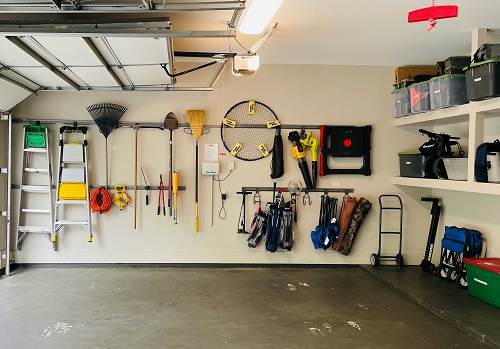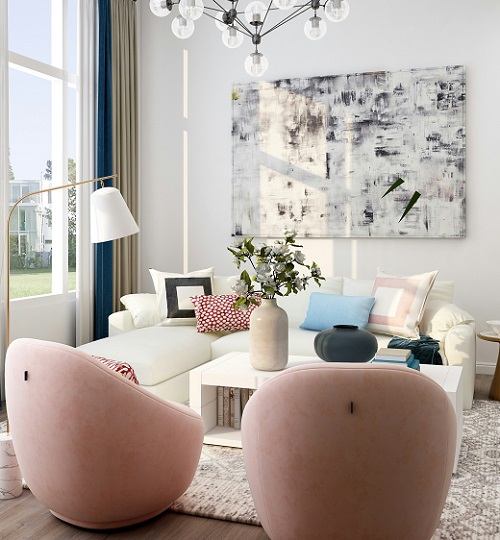Case Study: Transforming a Cluttered Garage into a Functional Space
By Pamela Wong
Pamela is a Trained Professional Organizer based in Oakville, Ontario and is the owner of Zen N Organized. She helps homeowners and small business owners transform their homes and home offices into organized spaces. She has a practical, non-judgemental approach to organizing. Her objective is to create functional and harmonious spaces for her clients.

When Sarah and Michael, two busy professionals with demanding jobs and a blended family with various needs, moved into their home fifteen years ago, their garage was meant to be a functional extension of their home. What was supposed to be a place for cars, holiday decorations, sports equipment, and a few storage bins has, a decade and a half later, become a chaotic, stress-inducing dumping ground they avoided at all costs.
Like many families, their garage slowly spiraled into disarray. At first, it was just a few bins of holiday decorations. Then came the unused tools, countless bins of “we’ll deal with this later” and “we may need it someday” furniture. Eventually, the garage door could barely close and they finally called for help.
This case study highlights not only how easily garage clutter can take over, but also how to regain control of the space – and keep it that way.
Why Garages Fall into Chaos
- It’s Out of Sight, Out of Mind
The garage is not part of their main living space, so it’s easy to close the door and forget what’s behind it. Over time, things pile up to the point where they can’t find what they need. - It Becomes a Catch-All Space
Sarah and Michael often tossed things in the garage that didn’t have a place inside the house: old furniture, unopened delivery boxes, and kids’ outgrown toys. Then there is an entire category of “the one hit wonder of kitchen gadgets” – milk frother, indoor grill, waffle maker, pressure cooker. The novelty wears off after a few uses and they become clutter on the kitchen counter, eventually get moved into the garage to be forgotten. This is a common scenario—garages often become one of the default dumping grounds. - Life is Busy
With two full-time jobs, children’s extracurricular activities, and social commitments, weekends were for resting – not tackling a messy garage. This meant the project kept getting pushed back. - No Clear System or Zones
Without a plan for where things go, items were randomly placed wherever there was room. Over time, it became impossible to find anything without digging. - Emotional Attachment and Decision Fatigue
Michael kept boxes of college memorabilia and old tools he inherited from his father. Sarah had bins of the kids’ baby clothes that she didn’t want to part with. Both felt emotionally tied to certain items, which made decluttering feel even more daunting.
Simple Steps to Declutter and Organize the Garage
When Sarah and Michael brought me in, the process was broken into manageable steps. Here’s how you can do it too:
Step 1: Set a Realistic Goal
I collaborated with Sarah and Michael to design the layout of the space based on their vision for the space and their budget.
Step 2: Empty the Space
In order to review all items in the space, everything was pulled out of the garage and sorted into categories. This helped them see exactly what they owned, and identify duplicates or unused items.
Step 3: Sort and Declutter Ruthlessly
As a professional organizer, I guided them through the “Keep, Donate, Trash, Sell” process. As a neutral third party, I helped reduce tension and kept them on track.
Step 4: Address Sticking Points as a Team
Michael wanted to keep all his tools “just in case,” while Sarah was willing to let go of most of the baby gear. They agreed on specific boundaries – only tools in good condition with a clear purpose could stay, and Sarah kept a small bin for sentimental baby items.
Step 5: Create Zones for Like Items
Now, every item had a home. The garage was divided into zones: tools, lawn care, holiday décor, sports equipment, seasonal items, and an area for car related items.
Step 6: Invest in the Right Storage
Shelving, clear bins, wall hooks, and ceiling racks were installed to maximize space and keep everything visible and accessible.
Step 7: Label Everything
Having clear labels on bins and shelves made it easy for everyone in the household to know where things go and return them to their place.
Potential Issues and How to Handle Them
Disagreements Between Partners
It is not uncommon for couples to have different attachment levels to their belongings. When tension rises:
- Set aside time to calmly discuss the purpose of the space.
- Create a rule for sentimental or undecided items that both parties can agree on. This may be a “one bin per person” or a specific square footage within the garage.
- Bring in a neutral party (friend or professional) to mediate decisions.
Letting Go of “Just in Case” Items
The fear of needing something later can keep you from decluttering. Ask yourself:
- When was the last time I used this?
- Could I borrow or rent it if I needed it again?
- Is it taking up prime real estate that could be used for something more valuable?
The Key to Staying Organized: Maintenance and Involvement
After the garage was transformed, Sarah and Michael made a commitment to keep it that way. They implemented a maintenance schedule:
- Once a month, they do a quick 15-minute tidy-up.
- Every quarter, they reassess what’s being stored, and purge anything that’s no longer needed.
- Each family member is responsible for their zone or category (kids put away sports gear, Michael checks tools, Sarah reviews seasonal items).
Involving the whole family made a huge difference. When everyone knows where things go and feels ownership of the space, they are more likely to keep it organized.
The Benefits of an Organized Garage
The payoff is HUGE!
- Less Stress: No more arguments about where things are or tripping over clutter.
- More Space: They can now park both cars in the garage, which is especially appreciated during Canadian winters.
- More Time: No more wasted hours searching for camping gear or seasonal decorations.
- More Joy: The space is functional and accessible.
Sarah said it best: “I didn’t realize how much the clutter was affecting my mental state until it was gone. I feel lighter.”
Final Thoughts
A garage is more than a place to store things – it’s an extension of your home and your life. When clutter takes over, it creates stress and frustration. But with a clear plan, teamwork and regular maintenance, any family can reclaim their space and their peace of mind.
So, if your garage feels overwhelming, you’re not alone. Start small, be kind to yourself (and your partner), and remember: the goal isn’t perfection. It’s functionality and freedom. And once it is done, you’ll have more time to enjoy what really matters – living your life, not managing your stuff.



